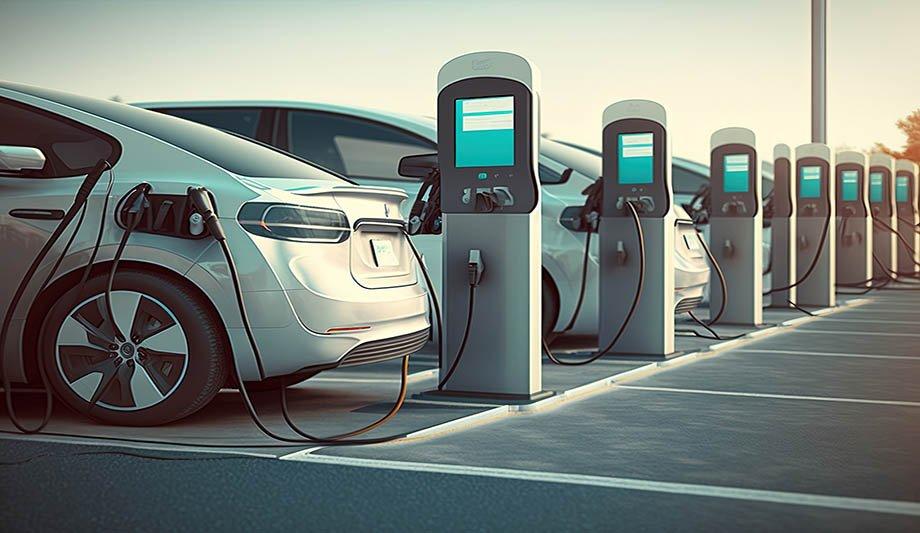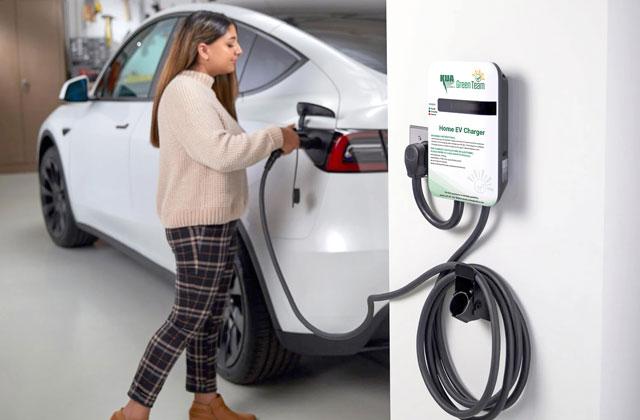Expert Opinions and Market Insights When You Buy EV Charging news
Expert Opinions and Market Insights When You Buy EV Charging news
Blog Article
New Dope in EV Charging: How the Sector Is Progressing to Meet Demand
As the electric automobile (EV) market remains to broaden, the charging infrastructure is undergoing considerable improvements to attend to the surging need. Secret developments in ultra-fast billing modern technologies, coupled with clever grid integration, are improving the landscape. Innovations in battery modern technology pledge improved efficiency and sustainability. The quest of global charging criteria continues to be a vital element in making it possible for smooth individual experiences and prevalent fostering. The ramifications of these improvements raise vital inquiries regarding the future of EV charging and its role in the broader power environment.
Growth of Billing Infrastructure
The rapid growth of electric lorry (EV) charging facilities is a vital part in promoting the widespread fostering of electrical mobility. As governments, personal firms, and consumers increasingly recognize the relevance of lowering carbon discharges, financial investments in billing networks have risen. This infrastructure development is necessary to relieve array anxiousness, guaranteeing that EV customers have hassle-free access to charging stations.
Considerable improvements in billing terminal modern technology and deployment approaches have arised. Urban locations are seeing an expansion of public billing terminals, while country areas are slowly being integrated into the charging network. Partnerships in between automotive makers and charging carriers are becoming a lot more common, promoting the facility of thorough networks that boost customer experience and ease of access.
Furthermore, the combination of sustainable energy resources right into billing terminals is getting energy, advertising sustainability in the EV community. This transition not just sustains ecological objectives yet also aligns with the increasing demand for environment-friendly power options amongst consumers.
Ultra-Fast Charging Technologies
Ultra-fast charging technologies stand for a significant jump forward in the EV billing landscape, making it possible for electrical automobiles to charge in a fraction of the time contrasted to standard charging approaches. These technologies commonly deliver power levels going beyond 150 kW, with some systems rising to 350 kW or more, significantly decreasing charging times to just 15-30 mins for a significant cost.
Trick making it possible for innovations consist of advancements in battery chemistry, power electronic devices, and thermal monitoring systems. As an example, high-capacity batteries with improved thermal stability enable faster charging without overheating. Additionally, developments in charging infrastructure, such as liquid-cooled cables and modular charging stations, facilitate efficient power transfer, enhancing the overall user experience
Major auto makers and modern technology companies are actively purchasing ultra-fast billing networks, identifying the vital role they play in conquering variety stress and anxiety and increasing the fostering of electric vehicles. As these modern technologies become much more widely offered, the EV market is expected to witness considerable development, making electric flexibility a much more appealing alternative for consumers. Overall, ultra-fast charging technologies are critical in shaping the future of sustainable transport, leading the way for an extra efficient and extensive charging ecosystem.
Smart Grid Integration

Through need action important source methods, wise grid systems can change billing timetables based on grid problems and power prices. Throughout durations of high need, billing can be delayed to off-peak hours, resulting in lower expenses for customers and reduced pressure on the grid. Additionally, vehicle-to-grid (V2G) modern technologies enable EVs to discharge energy back right into the grid, boosting and providing supplementary services grid stability.
Integration with renewable power sources better boosts the sustainability of EV charging. By lining up charging activities with durations of high solar or wind generation, wise grids promote a greener billing framework. Ultimately, wise grid assimilation not only supports the expanding demand for EVs however also contributes to a more lasting and resilient power future, positioning the industry for long-term success.
Battery Innovations
In the middle of the quick development of electric vehicles (EVs), battery technologies stand at the leading edge, driving innovations in performance, sustainability, and performance. As the demand for EVs surges, manufacturers and scientists are concentrating on improving battery modern technologies to deal with obstacles such as variety anxiety and charging times.
Lithium-ion batteries continue to be the most extensively used innovation, yet brand-new products and chemistries are arising to improve power density and durability. Solid-state batteries, for example, promise better energy storage ability and improved safety by replacing fluid electrolytes with solid ones. This change could significantly reduce the danger of fire and raise the life expectancy of batteries.
Furthermore, advancements in battery recycling procedures are important for sustainability. Business are establishing methods to recover important products like lithium, cobalt, and nickel from made use of batteries, advertising a circular economic situation and decreasing ecological impact.

Worldwide Charging Criteria

Initiatives are underway to establish international billing requirements that promote compatibility among various EV designs and charging stations. Organizations such as the International Electrotechnical Payment (IEC) and the Society of Automotive Engineers (SAE) are functioning collaboratively with automobile makers and energy suppliers to develop comprehensive standards. EV Charging news. These criteria their website purpose to improve the billing process, lower the need for multiple adapters, and boost customer experience
Additionally, standardization can substantially strengthen the expansion of the billing network, as it encourages financial investment by making infrastructure advancement much more reliable and foreseeable. As the EV market develops, a unified technique to charging standards will certainly be important for making sure that customers can bill their lorries easily and accurately, therefore sustaining the more comprehensive shift to lasting transport.
Final Thought
The electric lorry charging market is undergoing considerable transformation to deal with the rising need for lasting transportation. Improvements in billing infrastructure, ultra-fast technologies, wise grid combination, and innovative battery services are crucial in improving individual experience and operational performance.
Urban areas are seeing a spreading of public charging stations, while rural regions are gradually being incorporated right into the charging network. In addition, growths in billing facilities, such as liquid-cooled cords and modular billing stations, help with efficient power transfer, enhancing the overall customer experience.
Overall, ultra-fast billing innovations are crucial in forming the future of lasting transportation, leading the way for a more effective and substantial charging community. - EV Charging news
By straightening billing tasks with periods of high solar or wind generation, clever grids advertise a greener billing infrastructure.Initiatives are underway to develop worldwide charging requirements that help with compatibility amongst numerous EV models and billing stations.
Report this page